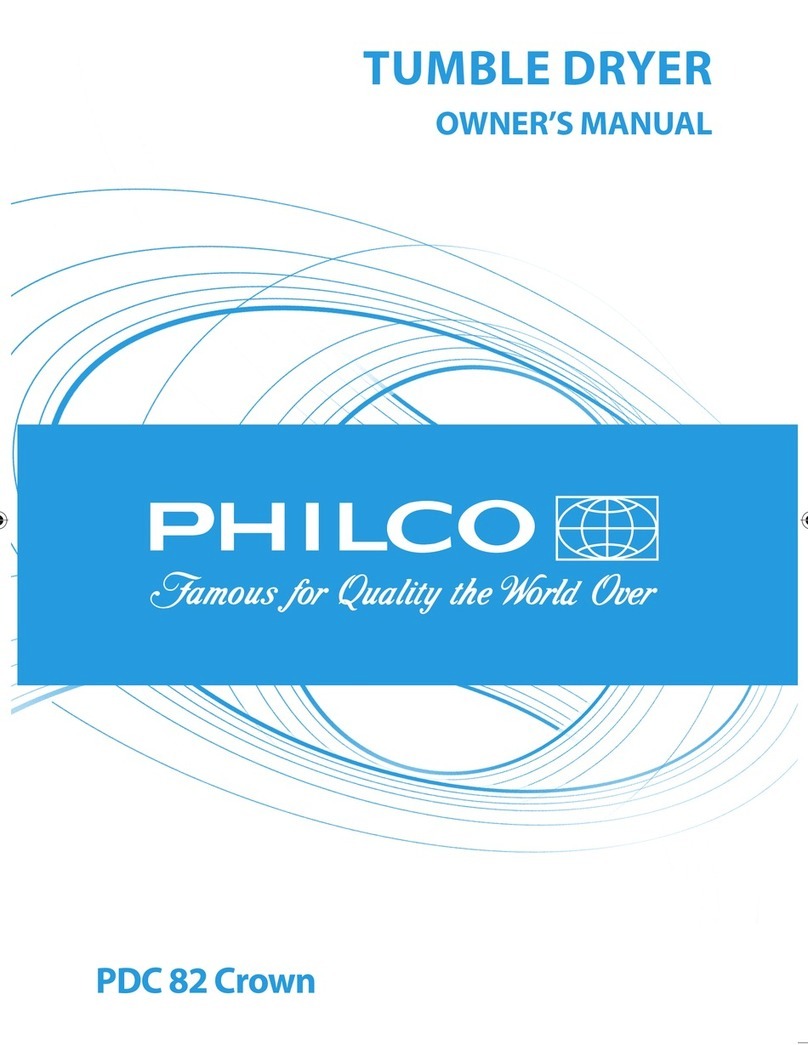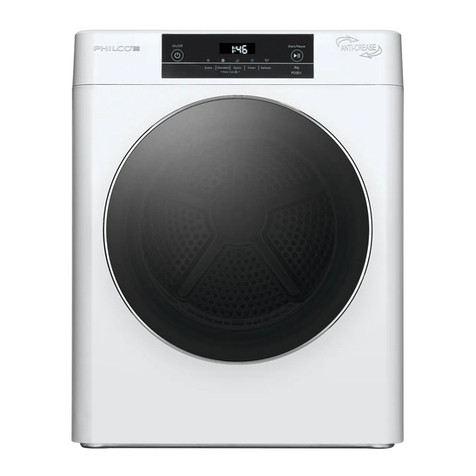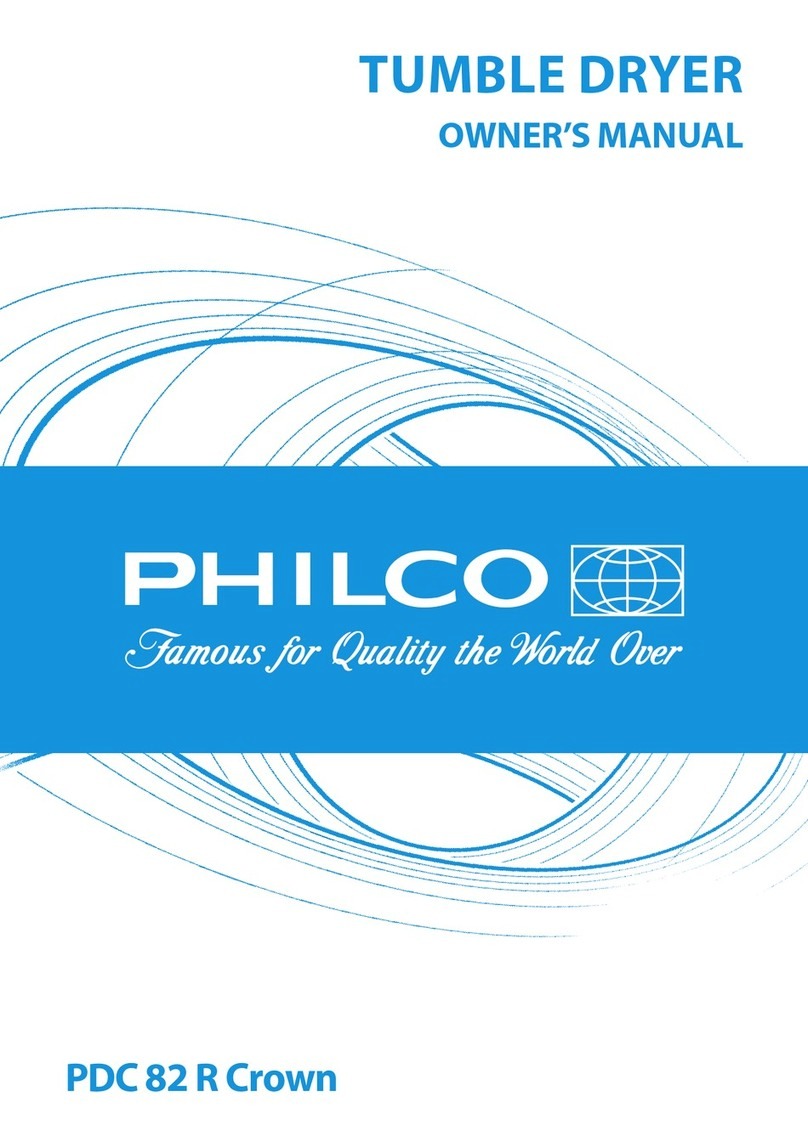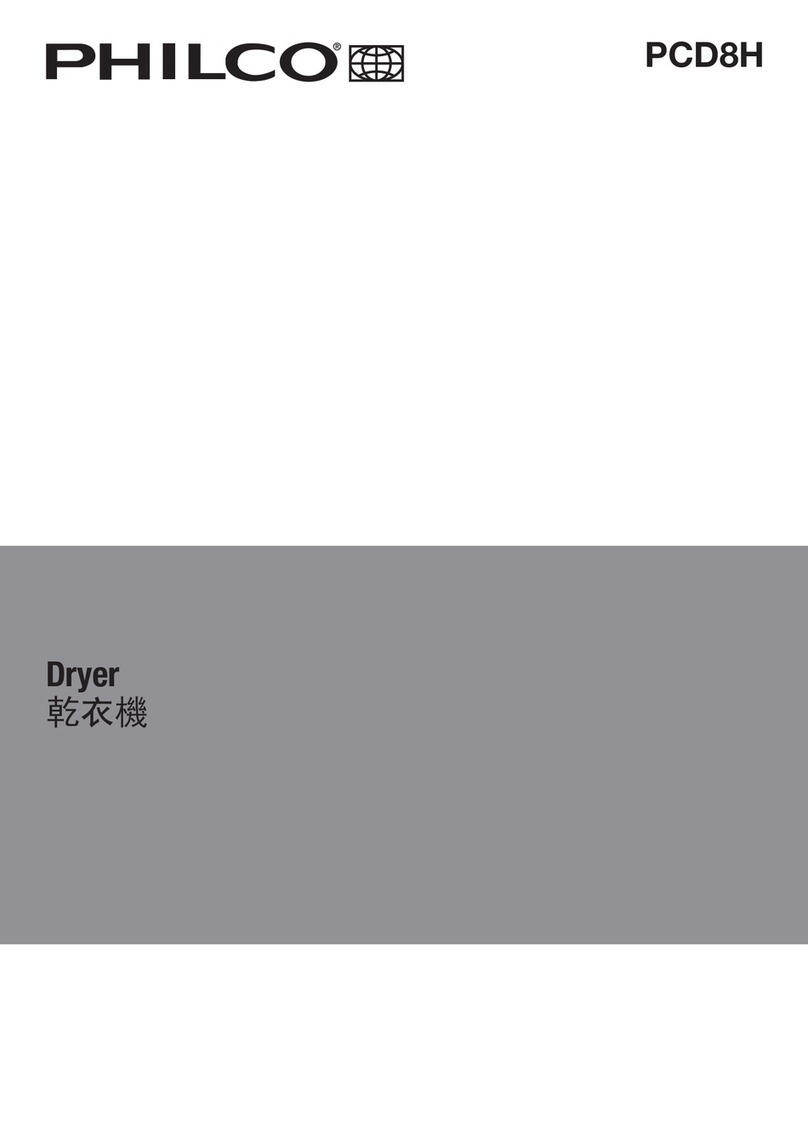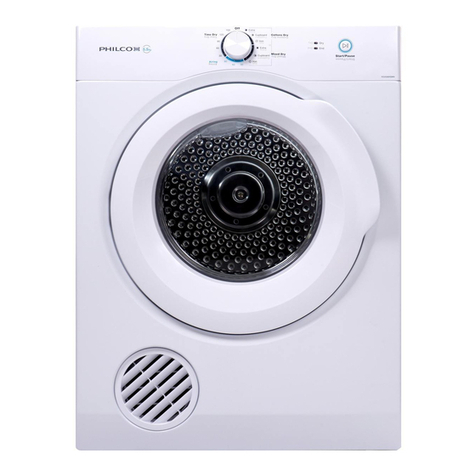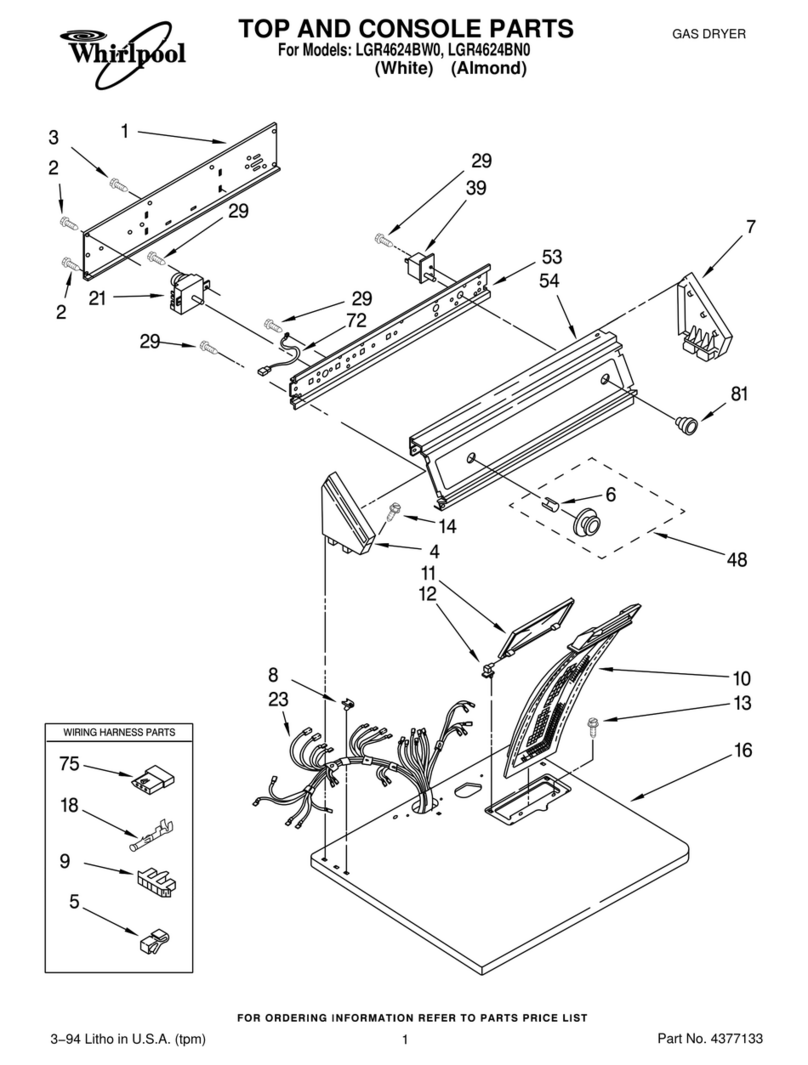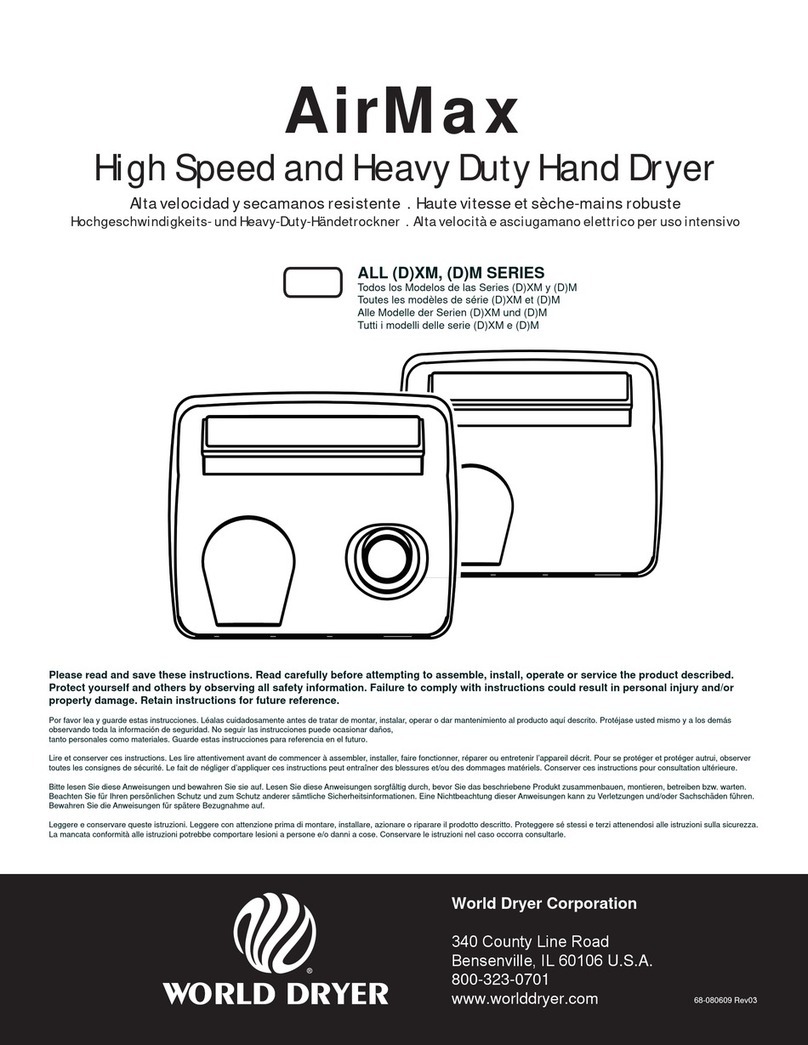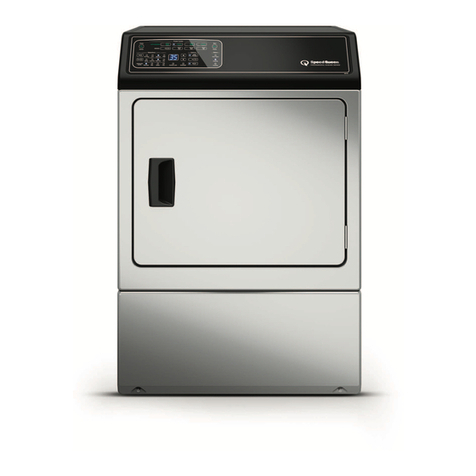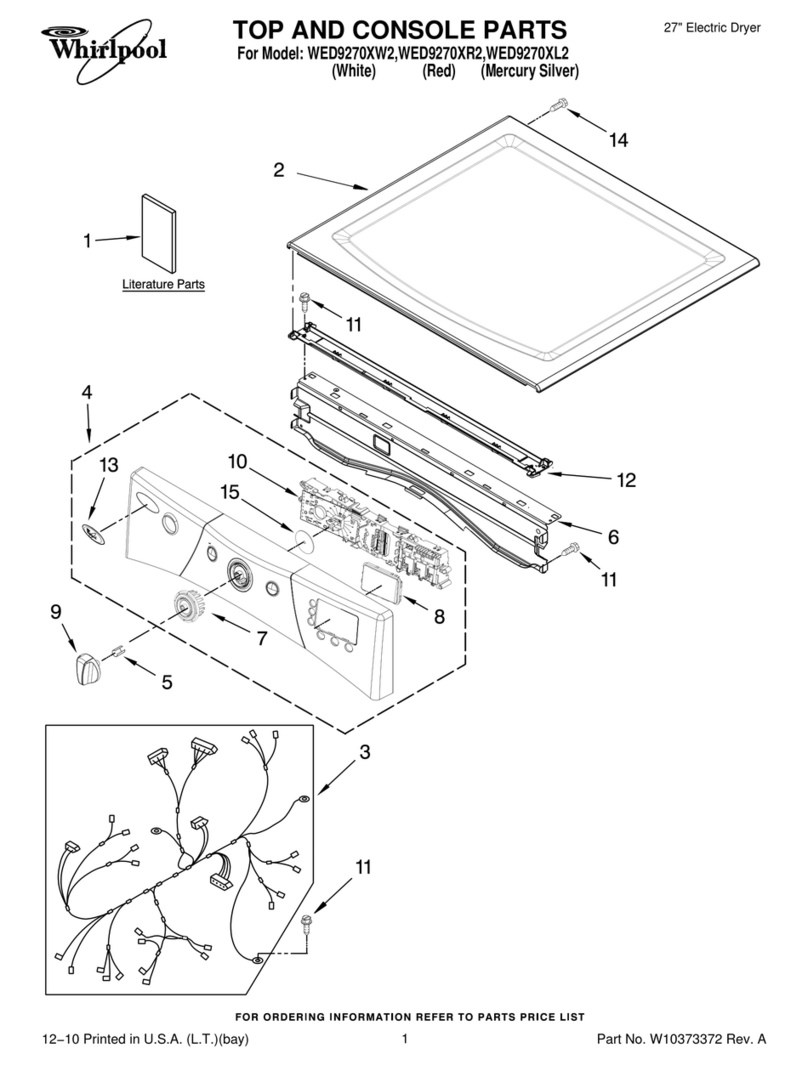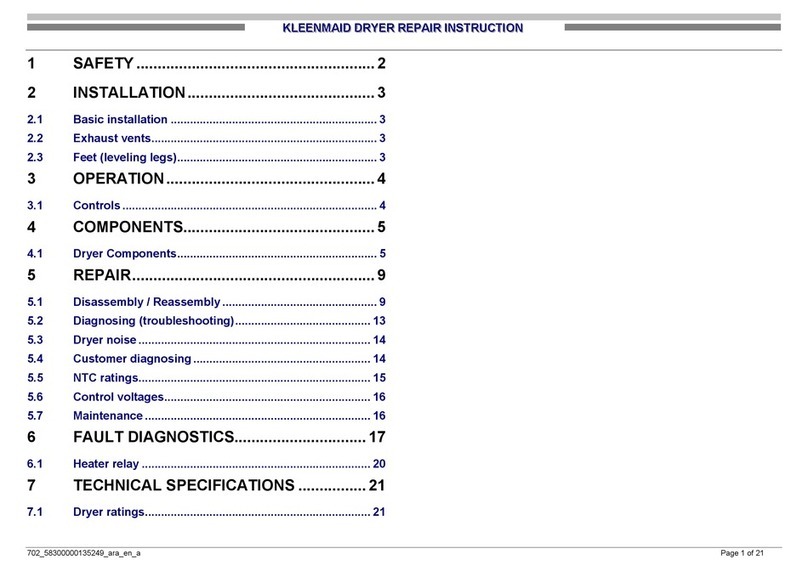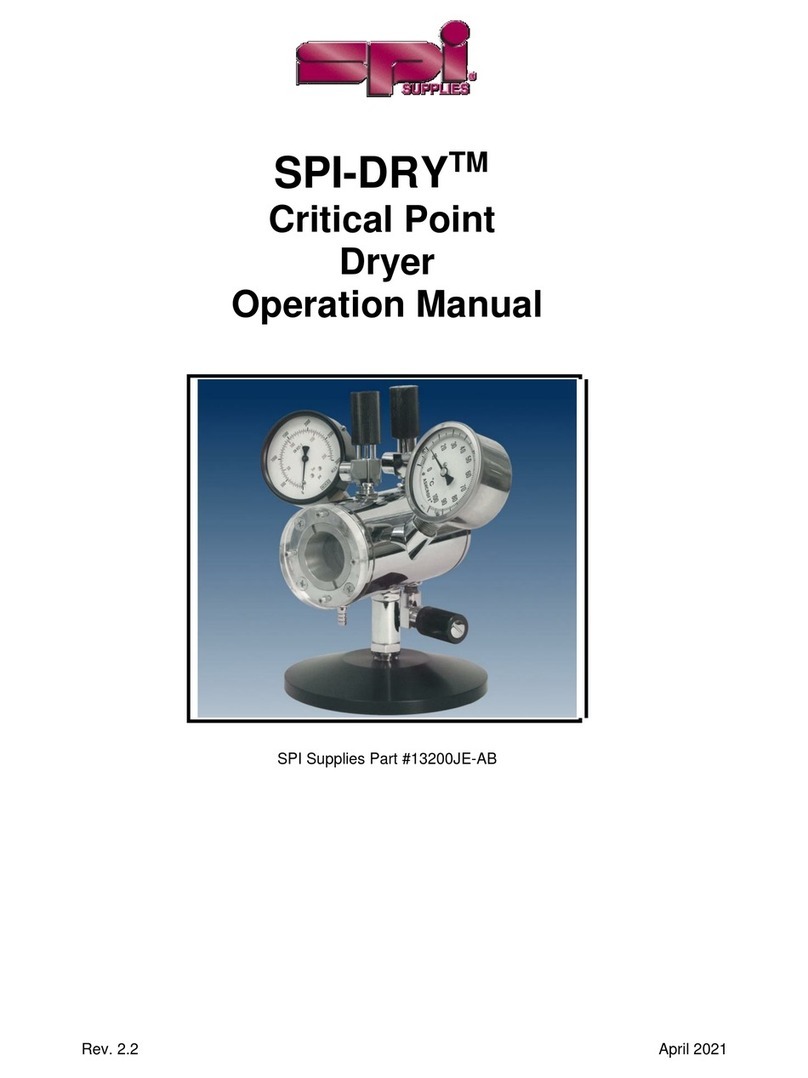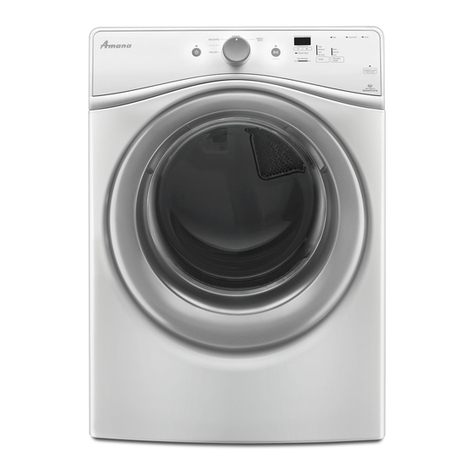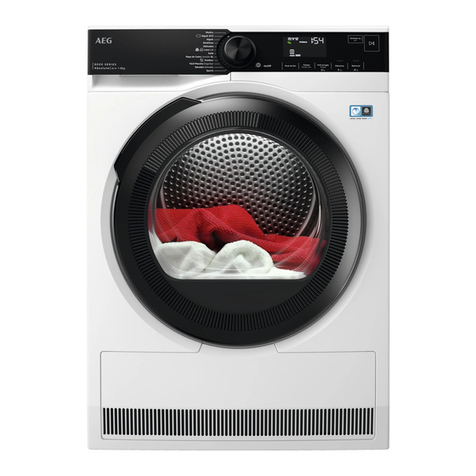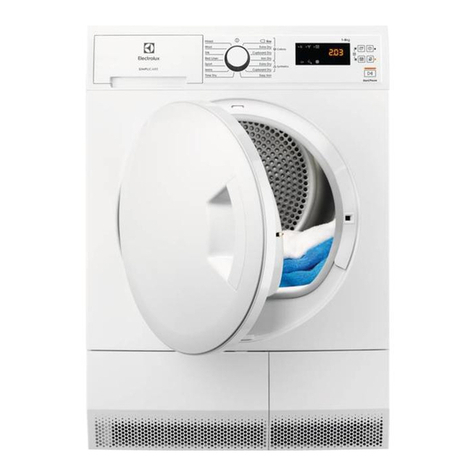
textiles, rubber backed articles and clothes or pillows fitted
with
foam rubber pads should
not
be
dried in the tumble dryer.
• Fabric softeners, or similar products, should
be
used
as
specified
by the fabric softener instructions.
• The final part
of
a tumble dryer cycle occurs
without
heat (cool
downcycle)
to
ensure thatthe items
are
leftatatemperaturethat
ensures thatthe items will
not
be damaged.
• The linttrap
has
to
be cleaned frequently.
• The
li
nt
must
not
to
be
allowed
to
accumulate around thetumble
dryer.
• Adequate ventilation
has
to
be provided
to
avoid the backflow
of
gases
into the room from appliance burning other fuels, includ-
ing open fires.
• The exhaust air must
not
be
discharged into a flue which
is
used
for exhausting fumes from appliance burning
gas
or otherfuels.
• The appliance must
not
be install behind a lockable door, a slid-
ing door or a door with a hinge on the opposite side
to
that
of
the tumble dryer. ln such away that afull opening
of
the tumble
dryer
door
is
restricted.
• Oil-affected items
can
ignite spontaneously, especially when ex-
posed
to
heat sources such
as
in a tumble dryer. The items be-
come warm, causing
an
oxidation reaction in the oil. Oxidation
creates heat.
lf
the heat cannot escape, the items
can
become
hot
enough
to
catch fire. Piling, stacking or storing oil-affected items
can
prevent heat from escaping and
so
create afire hazard.
•
lf
it
is
unavoidable that fabrics that contain vegetable or cooking
oil
or
have been contaminated by hair care products be placed
in a tumble dryer they should first be washed in
hot
water
with
extra detergent-this will reduce,
but
not
eliminate, the hazard.
• The appliance should
not
be overturned during normal
use
or
maintenance.
EN-4
Copyright© 2018,
Fast
ČR,
a.
s.
Revision
03/2018
